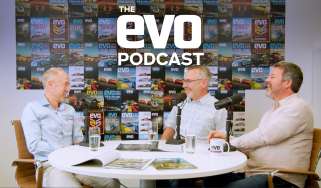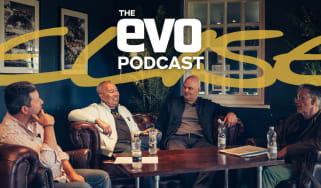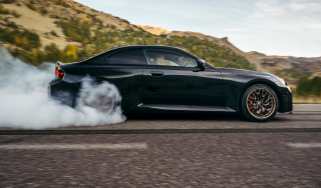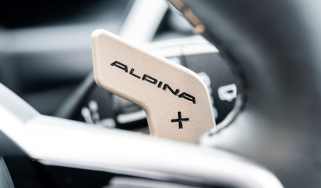The origins of the Jaguar F-type with the men that made it happen
The Jaguar F-type was a sports car 40 years in the making. We reunite the team that made it a reality, which includes our very own co-founder and editor-at-large, John Barker
Since the demise of the E-type in the mid-’70s, there had been a desire among enthusiasts, including many at Jaguar, to see a replacement, an F-type. It nearly happened in the mid-’80s, but for a number of reasons XJ41 stalled, and after the Ford takeover in ’89 it was re-engineered as the Aston Martin DB7. Then in 2008 Tata became Jaguar’s new owner and in Ratan Tata the company had a car enthusiast at the helm. Possibilities opened up and design director Ian Callum, chief programme engineer Russ Varney and chief engineer of vehicle integrity Mike Cross were quick to seize them. One result was X152, the new F-type.
I was involved too, having unexpectedly found myself out of a job at evo. By chance, Mike Cross was looking to add to his team of vehicle assessors because development of the hybrid supercar, C‑X75, was about to kick off. Ultimately C‑X75 didn’t make it to production but there was plenty to do on C‑X16, the sports car concept shown at Frankfurt in 2011 that would become the X152, aka the F-type.
What follows are excerpts from a full one-hour podcast on the F-type’s birth, embedded above from the evo YouTube channel.
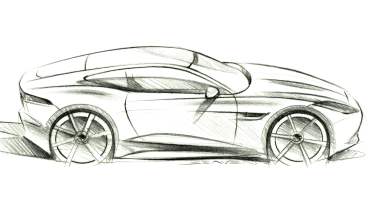
John Barker: Ford sold Jaguar to Tata in 2008. Did that seem like an opportunity to do more stuff, more interesting stuff?
Ian Callum: Yeah, I think it did. We had the ear and the attention of Mr Tata himself, and although he was primarily focused on Land Rover, he suddenly realised there’s a sports car company here and he wanted to get more involved. We used to see him regularly, and he loved cars. He was instrumental in a lot that happened. And if you got him on your side, which wasn’t difficult, he would endorse things quite quickly.
JB: C‑X75 was first. Was it a show car, a concept?
IC: Purely. It wasn’t intended for production. Julian Thomson and I decided we wanted to rattle things a bit. We thought there’s an opportunity to show off to Tata, we could do something really special. So we developed this one-off car with would-be turbine-charging motors on it, and it was a nice idea. It caught the imagination of a lot of people at Paris in 2010.
> Used Jaguar F-Type (2013 - 2024) review and buyer’s guide
JB: Then came C‑X16, which was actually the finished F-type coupe.
IC: We’d done the C‑XF years before and the design team went a bit wild on it, chopped the roof and put huge wheels on it, slimmed the lights… and we shot ourselves in the foot a little because when we brought out XF, the great new future of Jaguar, they kind of went ‘Oh…’. I learned the hard way you cannot over-promise on the concept cars. C‑X75 was different because it was a one-off. C‑X16, I said to the team, we’ve got to just temper this so that we don’t over-promise. But we did put the side opening [rear] door on it, like an E-type, which was a lot of fun.
JB: C‑X16 was intended for production.
Russ Varney: Well, we knew it would package, we knew that the design was feasible, and that made it actually easier for us to progress. Really, what Ian had done was the real car.
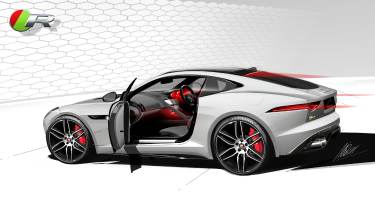
JB: There had been some benchmarking, creating a ‘statement of intent’?
Mike Cross: Back then there was a ‘Jaguar DNA’, which described how all Jaguars should drive, and we changed the flavour depending on whether it was a sports car, a saloon or whatever. We looked at the competition as well, worked with sales and marketing, and then tried to define all that in a document that everybody in the company could see, which described how the car should drive and behave.
JB: It was quite shrewd because although it was launched in Frankfurt, which was pretty bold, it wasn’t aimed at a particular Porsche. In price, the 911 was above, the Boxster was below.
MC: I think there’s sometimes an assumption that when you do a new car you start with a clean sheet of paper, but we carried over some hardware from preceding cars, so it would have been difficult with the hardware we’d got to objectively take on the 911, say. But what we wanted to do was give our car some character and give it some emotional appeal, which would offset any small objective shortcomings.
JB: That previous hardware was the XK’s aluminium structure, and that put a few constraints on the design.
IC: Absolutely. The fundamental package up to B-post was basically the same, and so we tried to shrink-wrap the surface of the car as tightly as possible to that hardware. I would like to have put the engine further back, it would have helped the bonnet line, would have helped the balance of the car. A transaxle would have been great as well, but that wasn’t going to be the case.
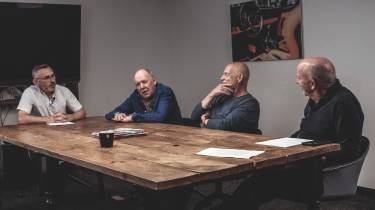
JB: The budget was quite modest?
RV: It was quite a lot less than a quarter of a normal, mainstream programme. There were constraints of time as well, because we needed to get it out there. Regarding Mike’s statement of intent, the important thing about that is that it’s the thread that goes all the way through, from before you’ve driven a car through to what you’re going to sell at the end.
And although we’d got an 80 per cent understanding of the hardware we’d got in the car, you often get quite a way through before you figure out that actually we’re not meeting the statement of intent. Mike and I had some serious conversations about things. So it’s not all done and dusted when you’ve written it all down, you learn things as you go through. The subtleties of going from something that’s okay or good to great can be quite small.
> The origins of the Lotus Elise with the men that made it happen
JB: Your role was to make sure it made its ‘gateways’, its checkpoints?
RV: As well as Mike with his statement of intent, all the other functions have their own requirements, be it sales and marketing, manufacturing, service, whoever, and at any point in those checkpoints, they can throw a card in that says we’re not progressing from here. That’s when we get back together to work out how, collectively, we deliver.
MC: Also at these gateways, it was a measure of the design maturity of the car from the component groups. We used to evaluate the car against the statement of intent, and we had certain pre-agreed shortfalls that were permissible because what could happen is a competitor might release a new car.
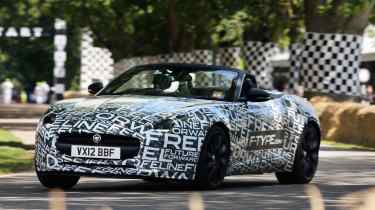
JB: I arrived and within a few weeks you said, ‘Do you want to come for a drive in this new car?’, which was a completely camouflaged, cut-and-shut XK convertible. That was a very odd experience, having worked for magazines that used to publish scoop shots of prototype cars. A few weeks later we had the first ‘wash up’ of that car, which obviously wasn’t anything near the finished car, but at the end of a VET [vehicle evaluation team] drive, we would sit around the table and score the car against the targets. I was quite encouraged because even that first prototype felt calm, collected, like it had potential.
MC: That was absolutely the objective of those drives, to be sure that the hardware had the potential to get where you wanted to be.
RV: We were endeavouring to create a sports car line that could compete with the best, with Porsche, and one of the key ways that they kept their product lines going is by refreshing them every year, so there’s a reason to buy another one.
JB: Why show the coupe but launch the convertible first?
IC: That was fundamentally driven by marketing. Mike O’Driscoll, who was head of marketing and very influenced by the American market, said the convertible was the highest-selling car historically.
MC: A great consequence of launching the convertible first was that the body structure was very good, so we had no shake issues, which made the tuning and development of the car much more straightforward. It also meant the coupe was then super-stiff.
JB: The car carried over quite a lot of XK parts…
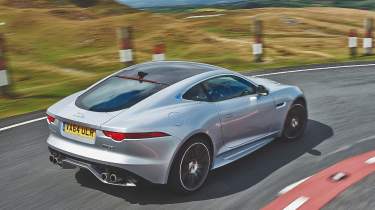
RV: The V6 was the V8 with two cylinders cut off, as simple as that. All the front-end drive was common, so it was the back two cylinders. We’d have preferred to have the front two off but we were happy with the engine as a V6.
MC: We knew the chassis well, so the tuning was comparatively straightforward. They were quite mature quite early.
RV: Yeah, it’s great having the new tech but, as Mike says, we knew those systems well so we got everything out of them.
MC: The cars were a little heavier than we would like and perhaps the weight distribution wasn’t perfect, but it had got the potential to be an exciting car to drive. I remember driving a Ferrari California and it had a great powertrain sound quality, so that’s something we came to concentrate on. I even drove Harry Metcalfe’s TVR Griffith and I remember thinking, with some polish this could make a great car.
JB: When it was launched, one of the magazines said, in a complimentary way, this is the best TVR I’ve ever driven, because the character of the V8 version was enormous. I remember going with Jeff Mitchell, your right-hand man, to assess the sound quality and it was pretty loud, pretty bold. Jeff said, ‘Not everybody in the company is going to like that, but that’s okay, because they’re not the customer.’ There was a definite aim to make it a visceral, emotional car.
MC: Yeah, to make it exciting and fun to drive. It was quite a small team within JLR at the time, because there was other big stuff happening, and we were allowed to just get on.
JB: For some reason the launch was going to be on Mallorca. I went to do the recce with a lovely chap called Moi. We drove around for a couple of days, went to very nice hotels… but there were about two roads where you could actually let rip. I came back and said this is going to make it look like the car’s not great to drive because you’re not allowing people to drive it. In the end, it was moved. The launch was out of Pamplona, went up to the Pyrenees and back round to Navarra circuit.
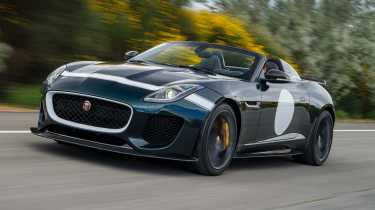
MC: The roads were fabulous.
IC: People loved it.
MC: We went to MotorLand Aragón too, with the Coupe R.
RS: Yes, that’s why we developed those carbonfibre brake scoops. We were conscious that we were on the track, and the car was quick. It was a properly quick track, wasn’t it?
MC: You could virtually max the car out on the back straight.
JB: I did the recce for that as well, to make sure that the car with its carbon brakes would be robust. And it was. The other thing I got to do, with your blessing, Mike, was be part of evo Car of the Year 2014, which included the Coupe R. I was along just as a safe pair of hands, not voting or anything. I was a fly on the wall. Some of them were going, ‘That F-type, you have to be on your toes with that, don’t you?’ I messaged Mike and said I think we’re going to be top five. And it came second. Then there was Project 7…
IC: Yes! One of the designers had come up with a sketch, I saw it and said let’s try and build one. We built a prototype that caught the imagination, influenced by the D-type, obviously. For me, the excitement was dropping the height of the screen, which changed the proportions completely. Ratan liked it. ‘Why don’t we build it?’ We made 100.
MC: I drove a concept car at the Goodwood Festival of Speed. We set it up so it would drift, so you could showboat round the first couple of corners.
JB: And it grabbed all the headlines, even though I think it was another mega Porsche anniversary. Generally, the F-type was well received. It did what it was meant to do, even if, objectively, it was not as good as the Boxster S or 911.
MC: I think we knew that was going to be the case. That’s why we turned up the emotional stuff.
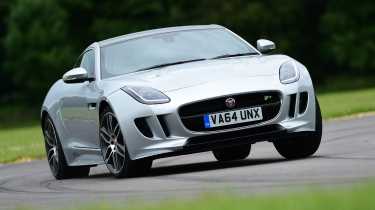
JB: Then there was all-wheel drive, which for some models, like the V8 S, was quite a blessing. It could have been better. When it initially came to us for evaluation it was fantastic. And then the durability guys said for the front diff life we had to dial everything back. So in the dry it was more rear-drive, a little bit less in the wet and then in the snow it could be the car that it should have been in the dry. Was all-wheel drive in the programme from the start?
RV: Yeah. We adopted a strategy where we could create something new every year. All-wheel drive was part of that whole cycle planning, as well as a manual transmission, which was, yes, solely for the American journalists. Nobody bought it; we didn’t expect them to.
JB: I remember the day that we learned that it was going to be called F-type. It was a surprise to me. I thought, oh, right, no pressure! Did you know what it was going to be called?
IC: No, it was just X152. It never even occurred to me. It was a marketing decision at the end of the day. When we all found out, we thought, ‘Wow, that’s great.’
JB: Quite close to the end of the first series there was an SVR, which was all-wheel drive and with the power really turned up, I think it was to 575bhp. The four-cylinder version came along as well, which was actually a very sweet car.
MC: I remember driving the car with journalists in north Wales. On the right twisty B-road, it went really well. It was 300 horsepower, which is more than an XJS V12 was.
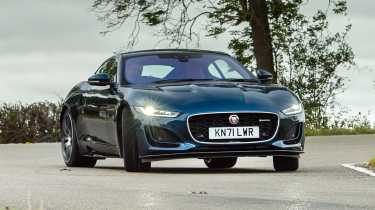
JB: Then there was a facelift in 2019.
IC: I think that was the last car I worked on.
RV: Midway through the cycle, we were really due a technology change to move the car on because those mature systems that we’d had, we’d wrung them out from the beginning. We would have needed to do something quite significant to give the car any further life.
IC: It deserved more, I think. At board level I felt a reluctance to take it further, because investment was probably going to be too much.
JB: It did what it was supposed to do. It certainly put Jaguar back on the sports car scene. And if you look at the figures, it outsold the E-type in the end, by about 15,000 units.
IC: They were good times. They really were.
JB: We probably made the last internal combustion Jaguar sports car.
IC: Maybe even the last Jaguar sports car. Who knows?



